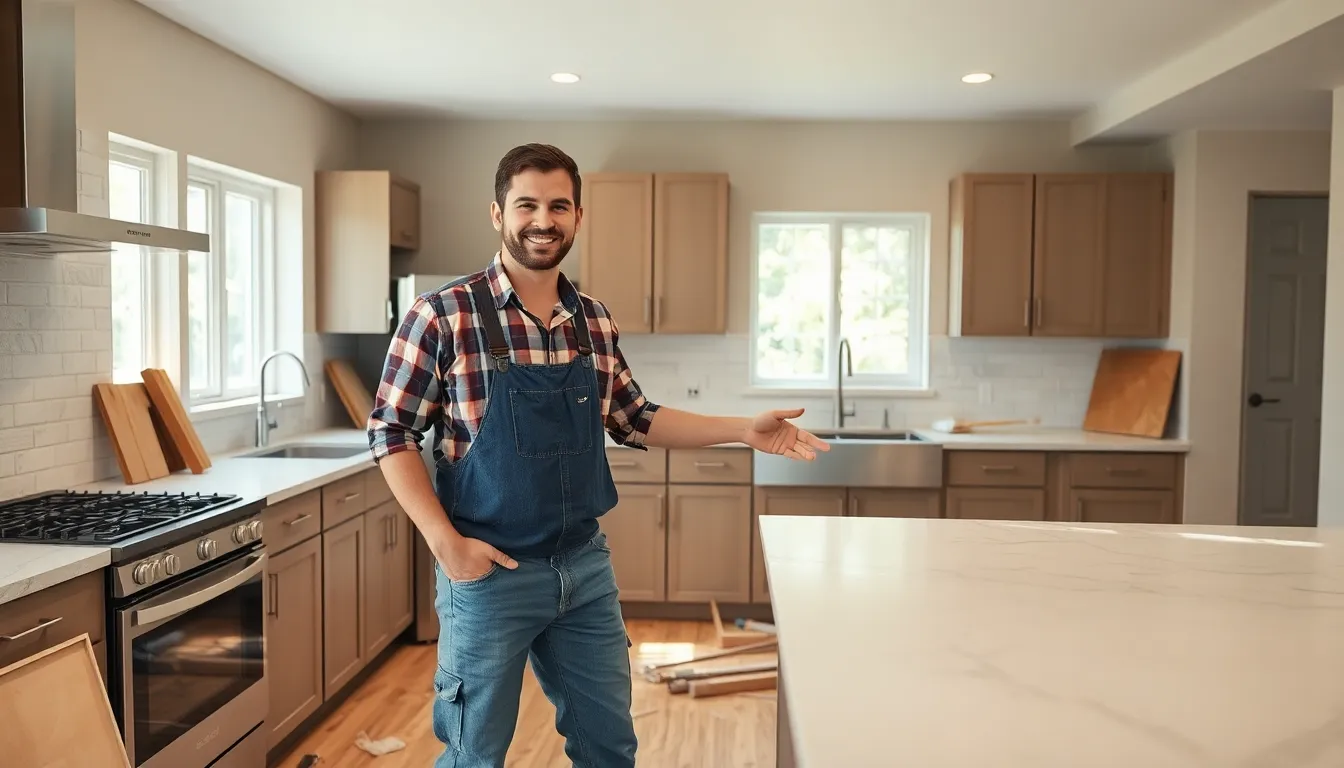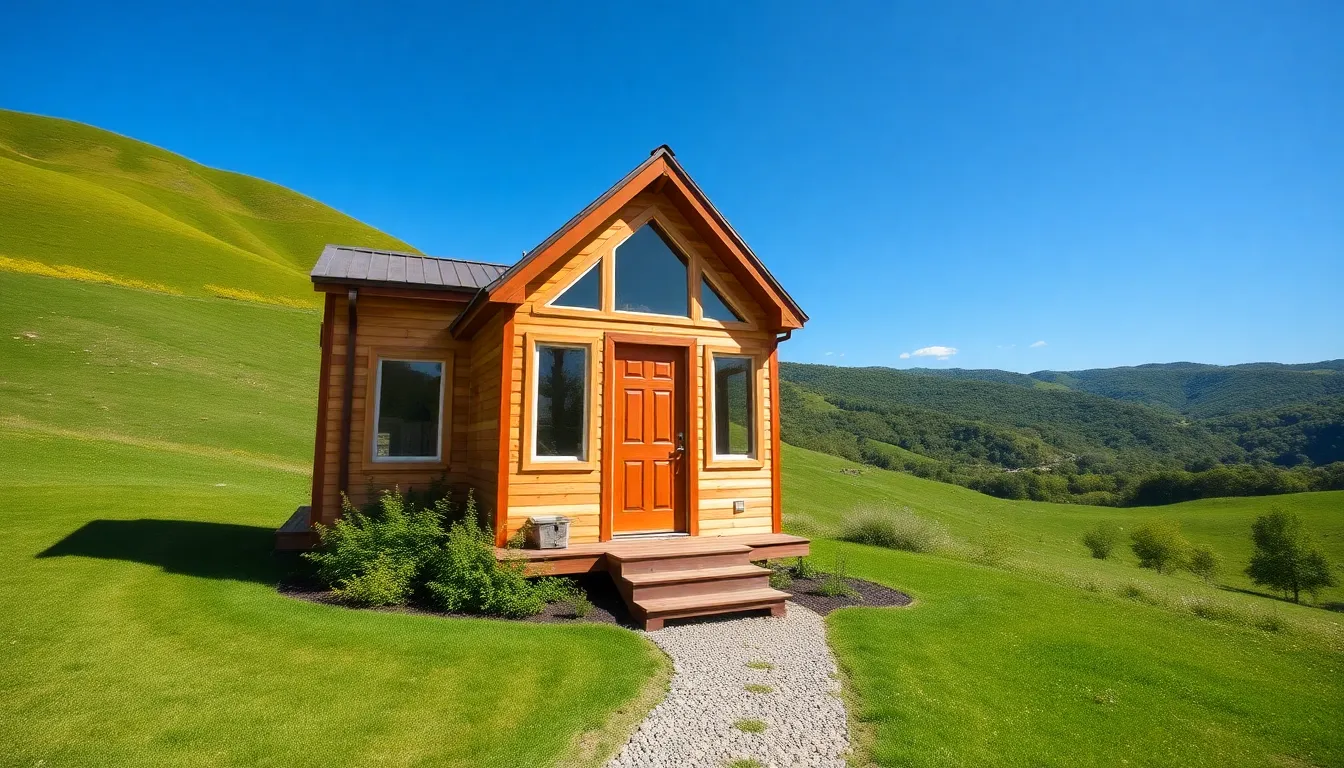Remodeling a home can breathe new life into a space, but the costs often hold homeowners back. Fortunately, government loans offer a viable solution for those looking to upgrade their living environment without breaking the bank. These loans come with favorable terms and conditions, making them an attractive option for many.
From energy-efficient upgrades to essential repairs, government-backed financing can help homeowners achieve their renovation dreams. Understanding the various programs available can empower individuals to make informed decisions and take advantage of the financial assistance that’s out there. With the right knowledge, transforming a home into a more functional and beautiful space is within reach.
Table of Contents
ToggleOverview of Government Loans for Remodeling Home
Government loans offer financial assistance specifically designed for homeowners seeking to remodel. These loans typically feature lower interest rates, relaxed credit requirements, and extended repayment terms, making them an attractive option for renovations.
Several key programs exist. The FHA 203(k) loan, for instance, allows borrowers to finance both the purchase and renovation of a home in one mortgage. The USDA Rural Development Guaranteed Housing Loan provides funding for home improvement in eligible rural areas. Additionally, the VA Renovation Loan offers veterans and active-duty service members the flexibility to finance home improvements alongside their mortgage.
Homeowners can utilize these loans for various renovations. Energy-efficient upgrades, essential repairs, and comprehensive remodels fall under the approved uses. Examples of improvements include new roofing, updated plumbing, and enhanced insulation.
Eligibility criteria vary based on the specific loan program. Generally, homeowners must prove their ability to repay the loan, provide documentation regarding their income, and demonstrate the intended use of the funds. Understanding these requirements enables better preparation and increases the likelihood of loan approval.
Researching available government loans is crucial. Homeowners should assess their financial situation, evaluate the scope of renovations, and identify which program aligns with their needs. Accessing reliable resources and consulting with financial advisors can greatly assist in making informed decisions.
Types of Government Loans

Various government loans assist homeowners in remodeling their properties. These loans feature flexible terms and conditions, allowing for a range of improvements.
FHA 203(k) Loans
FHA 203(k) Loans provide financing for both purchasing and renovating a home. This program enables eligible borrowers to include repair costs in the mortgage, up to a maximum of $35,000 for minor repairs or the total purchase price plus renovation costs for major projects. Homeowners can use funds for necessary upgrades like roofing, plumbing, or kitchen renovations. Eligible borrowers must meet FHA guidelines, including credit requirements and mortgage insurance obligations.
Fannie Mae HomeStyle Loans
Fannie Mae HomeStyle Loans offer a versatile option for homeowners needing funds for renovations. This loan allows borrowers to finance repairs or improvements as part of a conventional mortgage. Homeowners can finance up to 75% to 95% of the home’s value, depending on the property’s location and scope of work. The loan covers various renovations, including structural changes, landscaping, and energy-efficient upgrades. Borrowers must also meet Fannie Mae’s eligibility criteria, including a good credit score and sufficient income verification.
Eligibility Criteria
Eligibility for government loans targeting home remodeling hinges on specific income levels and credit scores. Understanding these requirements is crucial for homeowners seeking financing for renovation projects.
Income Requirements
Income requirements vary by program and typically align with the area’s median income. For instance, the FHA 203(k) loan mandates that borrowers demonstrate stable income sufficient to repay the mortgage while meeting local income limits. The USDA Rural Development Guaranteed Housing Loan emphasizes a maximum income threshold based on household size and location, often set at 115% of the median income. In contrast, VA Renovation Loans do not specify a strict income cap, allowing veterans and active-duty service members greater flexibility. Homeowners must prepare documentation, such as pay stubs and tax returns, to verify their income status when applying.
Credit Score Standards
Credit score standards play a vital role in determining eligibility for government loans. The FHA 203(k) loan generally requires a minimum credit score of 500 for 3.5% down payment options, while scores below 500 might necessitate a larger down payment. The USDA loan program typically requires a credit score of at least 640 to access streamlined processing, whereas the VA Renovation Loan does not impose a minimum score, although lenders often recommend a score of at least 620. Homeowners should assess their credit history and resolve any discrepancies before applying, as credit scores directly impact loan terms and approval likelihood.
Application Process
The application process for government loans tailored for home remodeling requires several key steps and documentation to ensure eligibility and approval. Homeowners must be prepared to provide accurate information and gather necessary documents to facilitate a smooth application.
Required Documentation
Homeowners must prepare specific documentation when applying for government loans. Key documents typically include:
- Proof of Identity: Valid government-issued identification, such as a driver’s license or passport.
- Income Verification: Recent pay stubs, tax returns, or bank statements to demonstrate stable income.
- Credit Reports: Credit history obtained from reporting agencies to assess creditworthiness, which supports eligibility.
- Property Information: Details about the home, including current market value, property deed, and any existing liens.
- Project Estimates: Detailed quotes or proposals from contractors outlining the planned renovations and costs.
Assembling these documents accurately expedites the review process and increases the chances of approval.
Steps to Apply
Applying for government loans involves several steps:
- Research Options: Explore available government loan programs appropriate for remodeling, such as the FHA 203(k), USDA, or VA Renovation Loans.
- Assess Eligibility: Review the eligibility criteria and ensure both credit scores and income levels meet the specified requirements for your chosen program.
- Gather Documentation: Collect all necessary documents as outlined in the previous section to support the application.
- Complete Application: Fill out the loan application accurately, providing all requested information.
- Submit Application: Send the completed application along with the documentation to the selected lender or financial institution offering the government loan.
- Await Approval: Wait for the lender to review the application, which may include processing the provided documentation and verifying information.
- Review Loan Terms: Upon approval, carefully review the loan terms and conditions before signing.
Following these steps ensures a structured approach to applying for government loans, enhancing the likelihood of successful funding for home remodeling projects.
Benefits of Government Loans
Government loans for remodeling provide significant advantages, making home renovations more accessible for many homeowners.
- Lower Interest Rates: Government loans often feature lower interest rates compared to conventional loans, reducing overall borrowing costs.
- Flexible Credit Requirements: Many programs accommodate lower credit scores, allowing a broader range of applicants to qualify. For instance, the FHA 203(k) loan permits scores as low as 500.
- Inclusive Financing Options: Homeowners can finance both the purchase of a home and its renovations under programs like the FHA 203(k) loan, making it easier to secure necessary funds in one package.
- Support for Energy Efficiency: Government loans often encourage energy-efficient improvements, providing homeowners incentives to enhance sustainability while reducing utility costs.
- Diverse Eligibility Criteria: Various programs cater to specific populations, such as veterans and rural residents, allowing targeted support for those in need.
- Comprehensive Coverage of Renovations: Loans cover a wide range of remodeling needs, from structural repairs to aesthetic updates, providing flexibility based on individual homeowner requirements.
- Streamlined Application Processes: Borrowers can find structured application processes aimed at simplifying the experience, often leading to quicker approval times.
- Potential for Additional Assistance: Some government programs may offer additional grants or financial assistance alongside loans, further easing the financial burden of remodeling projects.
- Longer Repayment Terms: Many government loans feature extended repayment periods, making monthly payments more manageable for homeowners.
- Improved Property Value: Investing in home renovations through these loans can enhance property value, maximizing homeowner investment returns.
These features position government loans as compelling financial solutions for homeowners aspiring to remodel their properties without incurring excessive costs.
Government loans offer a valuable pathway for homeowners aiming to remodel their properties. With attractive terms like lower interest rates and flexible credit requirements, these loans make renovations more accessible. Various programs cater to different needs and situations, ensuring there’s an option for almost every homeowner.
By understanding eligibility criteria and the application process, individuals can take advantage of these financial resources. This approach not only enhances living spaces but also contributes to long-term investment value. Homeowners should consider these loans as a strategic tool for achieving their remodeling goals while managing costs effectively.






